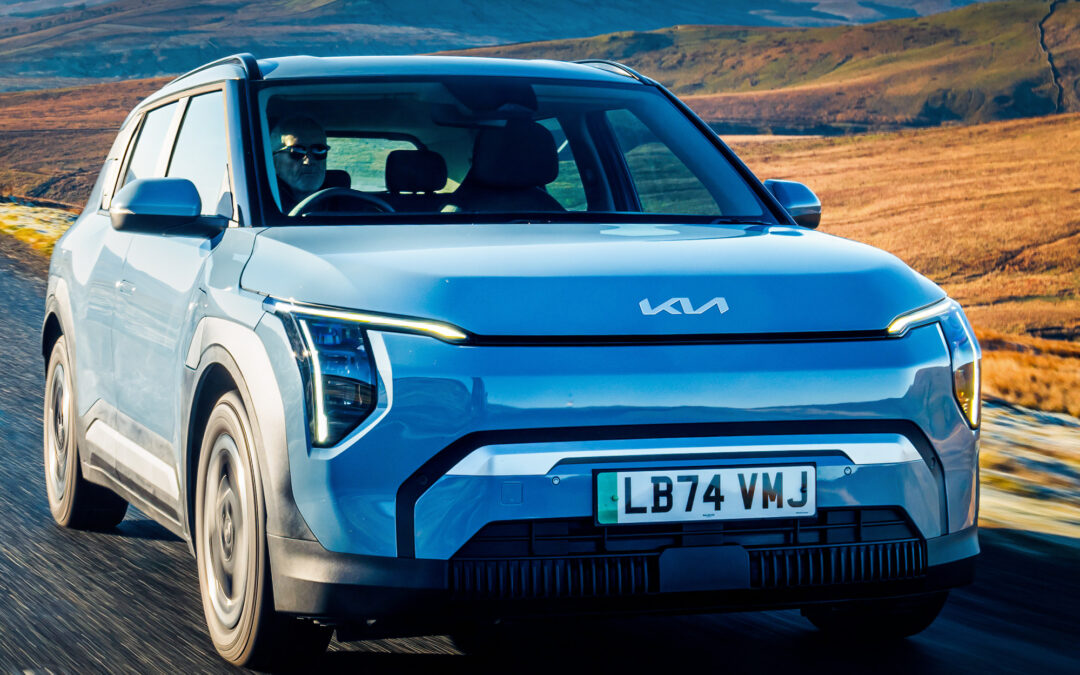Kia EV3
Kia’s ambitious idea is to squeeze the excellence of the EV6 and EV9 into a compact package with the potential to be a huge seller. Has it worked? We drain every last drop of juice from the most mainstream electric Kia ever
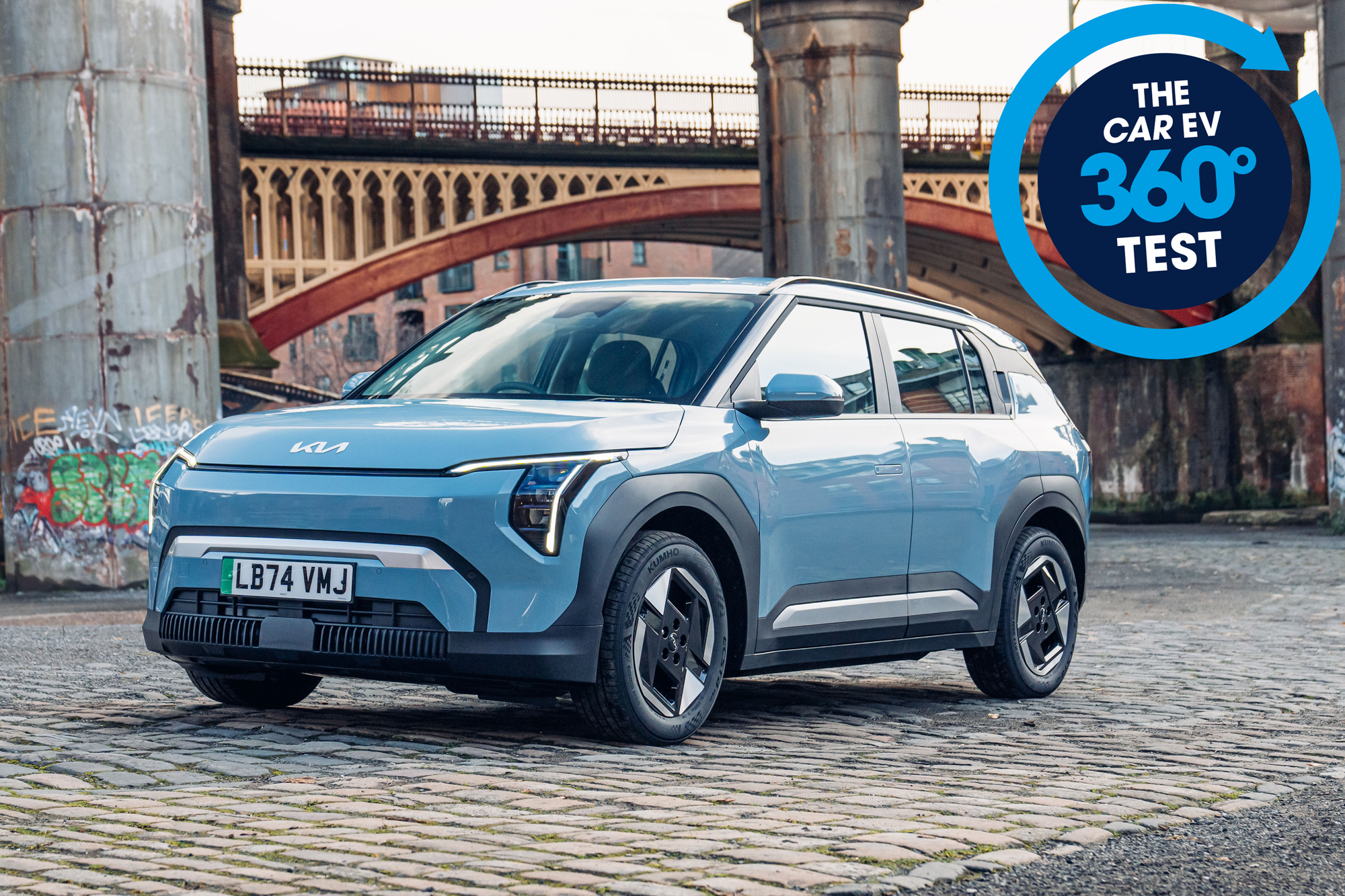
Kia isn’t a car maker that people love. Who wears a Kia T-shirt, let alone having the logo tattooed on their upper arm? This lack of emotional attachment means every Kia sale so far has been a rational decision. If people think anything about Kia, it’s sensible stuff: reliable, affordable, easy to get on with.
The vaugely retro Stinger coupe tried to sex things up, with minimal success, but the Korean manufacturer has found much richer pickings with its recent electric crossovers. While the likes of Audi and BMW have made electric cars intended to look and feel like familar combustion models, the EV6 and larger EV9 have boldly gone into new, future-facing territory, netting new buyers previously unmoved by the solidity of Kia’s warranty.
It’s a success Kia wants to continue, with 15 electric models due by 2027 and a full electric line-up by 2035, starting with the EV3, designed to make waves in the highly competitive compact electric SUV class. It’s a segment brimming with well-rounded opponents: the EV3 goes up against the quirky Volvo EX30, the racy Cupra Born and its more prosaic counterpart, the VW ID. 3, and now the all-new Skoda Elroq, among others.
‘We don’t recommend doing this yourself, as getting stranded with a flat battery can be a real pain’
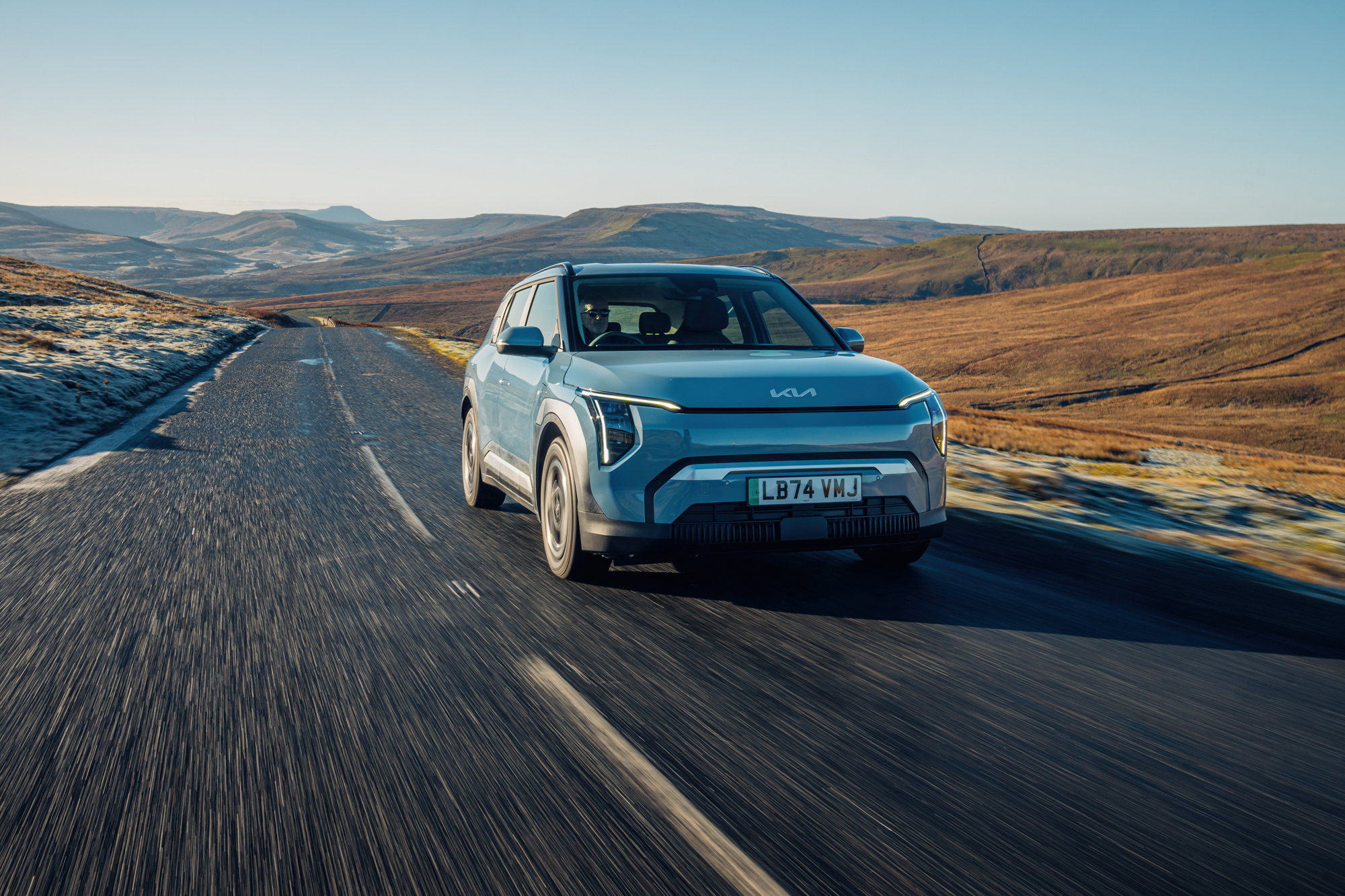
It’s asking a lot, but Kia says it has been able to adapt some tech from the bigger cars, which should help make the EV3 stand out from those competent if unexciting competitors. Kia claims a class-leading range of up to 375 miles (depending on spec), as well as bonus capabilities such as vehicle-to-load charging, where the EV3 becomes a portable power source.
The EV3’s UK starting price of £33,005 isn’t the cheapest in the class, but feels about right for what you get. Kia’s EVs ditch the cut-rate feel of some previous models, opting instead for a sprinkling of premium. It’s perhaps slightly more pleasant to the touch than the Volvo – and vastly more agreeable than the VW.
Another class topper? It certainly could be.
A 360º look around the car
You wouldn’t mistake the EV3 for either of its bigger siblings, but there are some shared elements. Like the EV9, the EV3 looks boxy and heavyset. Its flat grille and high bonnet line evoke scaled-down SUV squat, aided by relatively high ground clearance. It’s not pretty from any angle. In fact, it’s rather ungainly from most, but thanks to the thin headlight slits and super slippery front-end design it looks about as modern as can be. Kia calls it ‘Digital Tiger Face’, while the thin headlights are what the firm calls ‘Star Map’ design, as in the lines used to draw constellations together.
The chunky rear overhang isn’t quite so cosmic but it at least reinforces the SUV part of the EV3’s look. At 4300mm long, 1850mm wide and 1570mm tall, the EV3 is bigger than the EX30 and ID. 3 in every dimension, and that stocky, sculpted rear end gives the car a brawnier look, albeit at the cost of elegance.
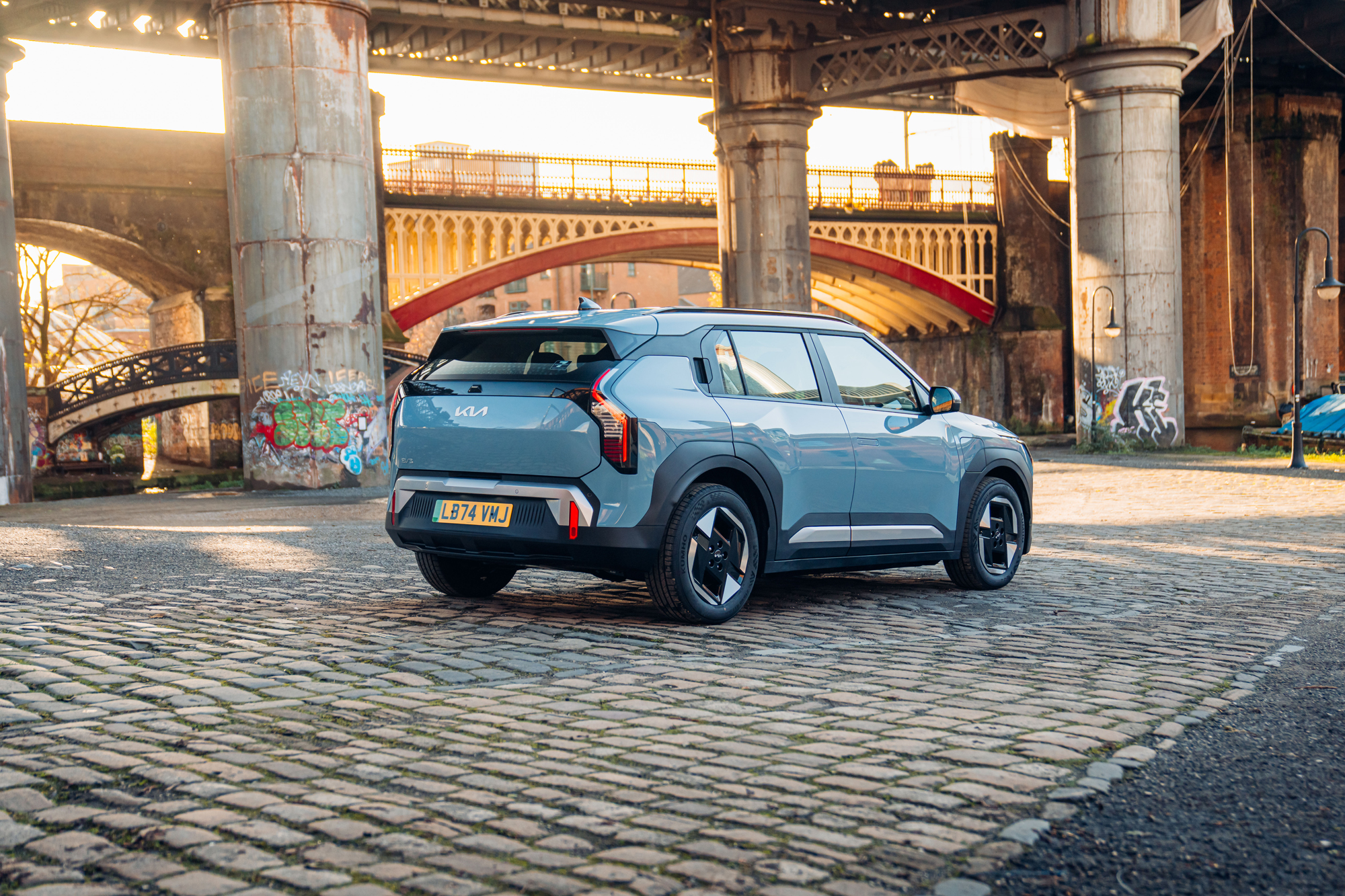
The interior layout follows suit with a minimalist style. The seats are firm but supportive, and build quality is excellent around the cabin, save for the plasticky central armrest and its faux marble counter-top look. We especially like our test car’s single ambient lighting strip across the dash and the teal glow it casts across the interior, as though plucked from the set of Blade Runner, or Close Encounters, or some other sci-fi classic from long ago.
A few ergonomic niggles let it down: our view of the climate control panel is blocked by the steering wheel, while the long, flat infotainment screen requires a real stretch to find the other end. Generally speaking, though, it’s a high-quality interior that’s comfortable and smartly arranged.
What’s it like to drive?
Most electric cars have a tranquility about them compared to those with engines, and the EV3 is a particularly smooth example. The grace with which it gets rolling feels like pushing off onto lake water. It takes quite a lot to unsettle the EV3. The ride is perhaps a touch on the firm side, letting you know about every pothole, but the suspension is supple enough to prevent jarring. The EV3 doesn’t fidget around on lumpy tarmac, although when you’re pushing very hard you’ll find the suspension seems to transfer road blemishes with some venom.
The EV3’s steering is nicely weighted but the rack is lazy, requiring plenty of input from the driver to get the car turning. It’s easy to manage, but the snoozy response serves as a reminder of the EV3’s chief purpose. It’s an electric family car, built to be practical, and not a hot hatch. That said, it’ll really get shifting if you jab the accelerator pedal, responding with the urgency made possible by an electric motor, deploying torque in an instant to get us away from traffic lights and into gaps on roundabouts.
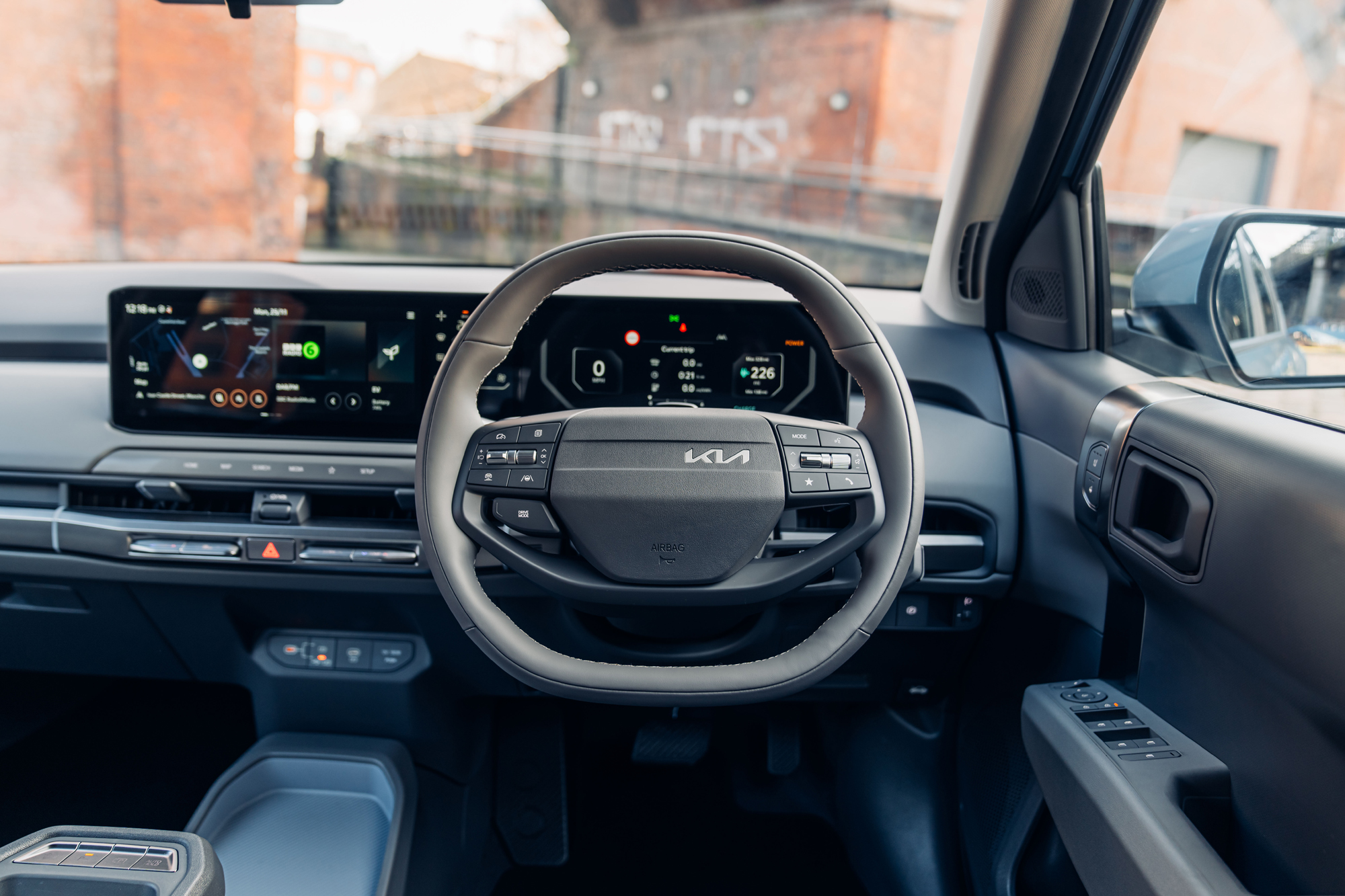

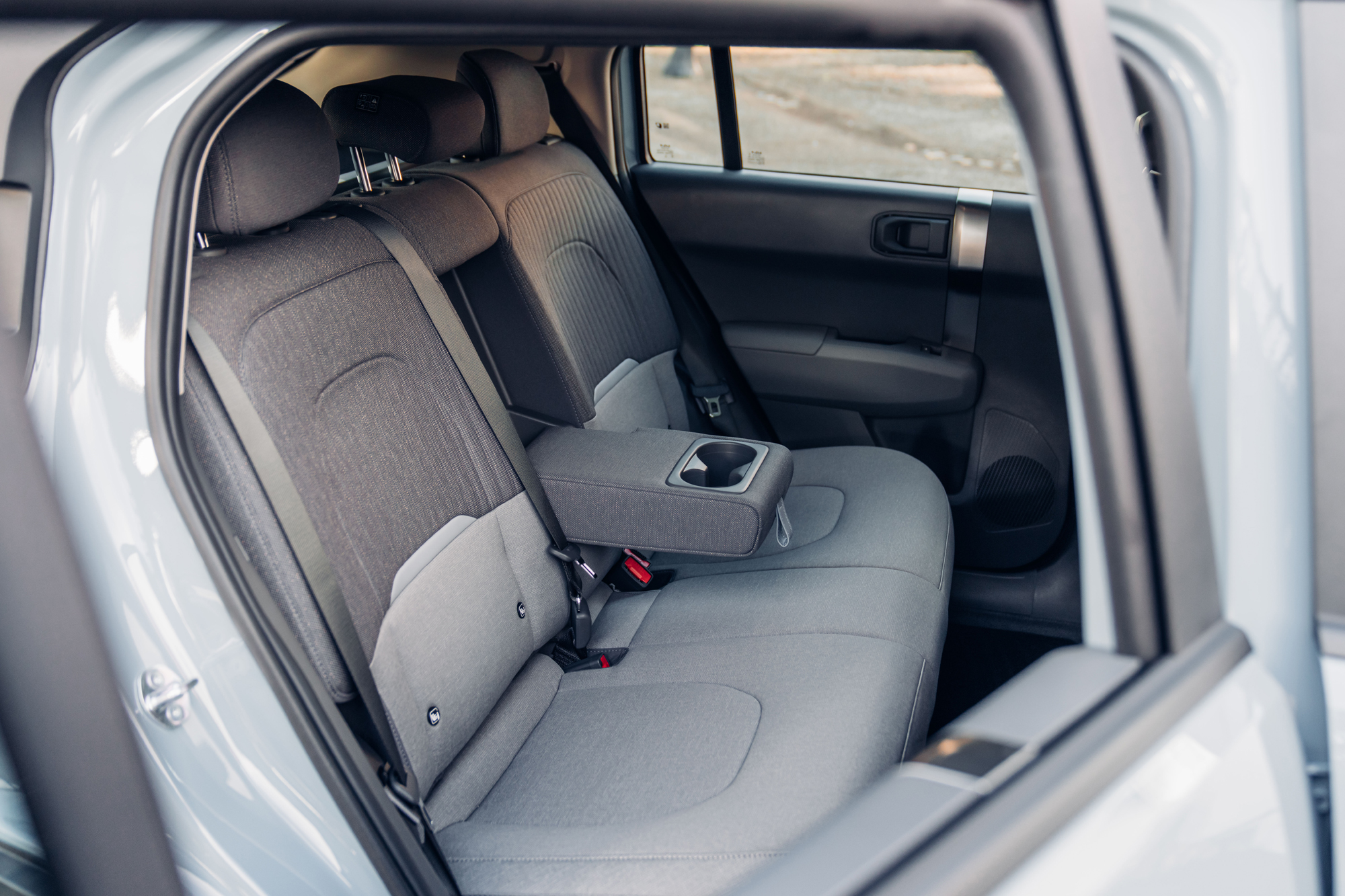
All EV3s have a 201bhp electric motor driving the front wheels via a single-speed transmission. Kia says an all-wheel-drive variant may arrive in the future, but for now it’s front-drive only. The EV3 we’re testing feels as rapid as you could ever want your compact SUV to be, with a 0-62mph time of 7.9 seconds.
Our test car is the bigger-battery variant – 81.4kWh, as opposed to 58.3kWh you get in the base spec. The official stats declare a combined range of 367 miles and 4.2 miles per kWh, but after a full run from brimmed to empty, we only squeezed 260 miles at an efficiency of 3.3 miles per kWh. A decent chunk of that distance involved motorway driving, which rarely flatters EVs, but even so those figures are a fair way off the official numbers.
How practical is it to live with?
The cabin itself is oddly spacious in some areas but not others. It’s perfectly possible for tall drivers to get comfortable, although there’s less headroom than in some other crossovers. In the back, legroom is pretty good – better than we found in the Volvo EX30 and VW ID. 3 – although headroom is, again, not great.
Kia says the boot can hold up to 460 litres, which is a significant 132 litres more than you get in the EX30. Upon opening the EV3’s boot, first appearances can be deceptive. At a glance there doesn’t appear to be much space, but in fact we were able to fit several small suitcases in with room to spare.
‘Another class topper? It certainly could be.’
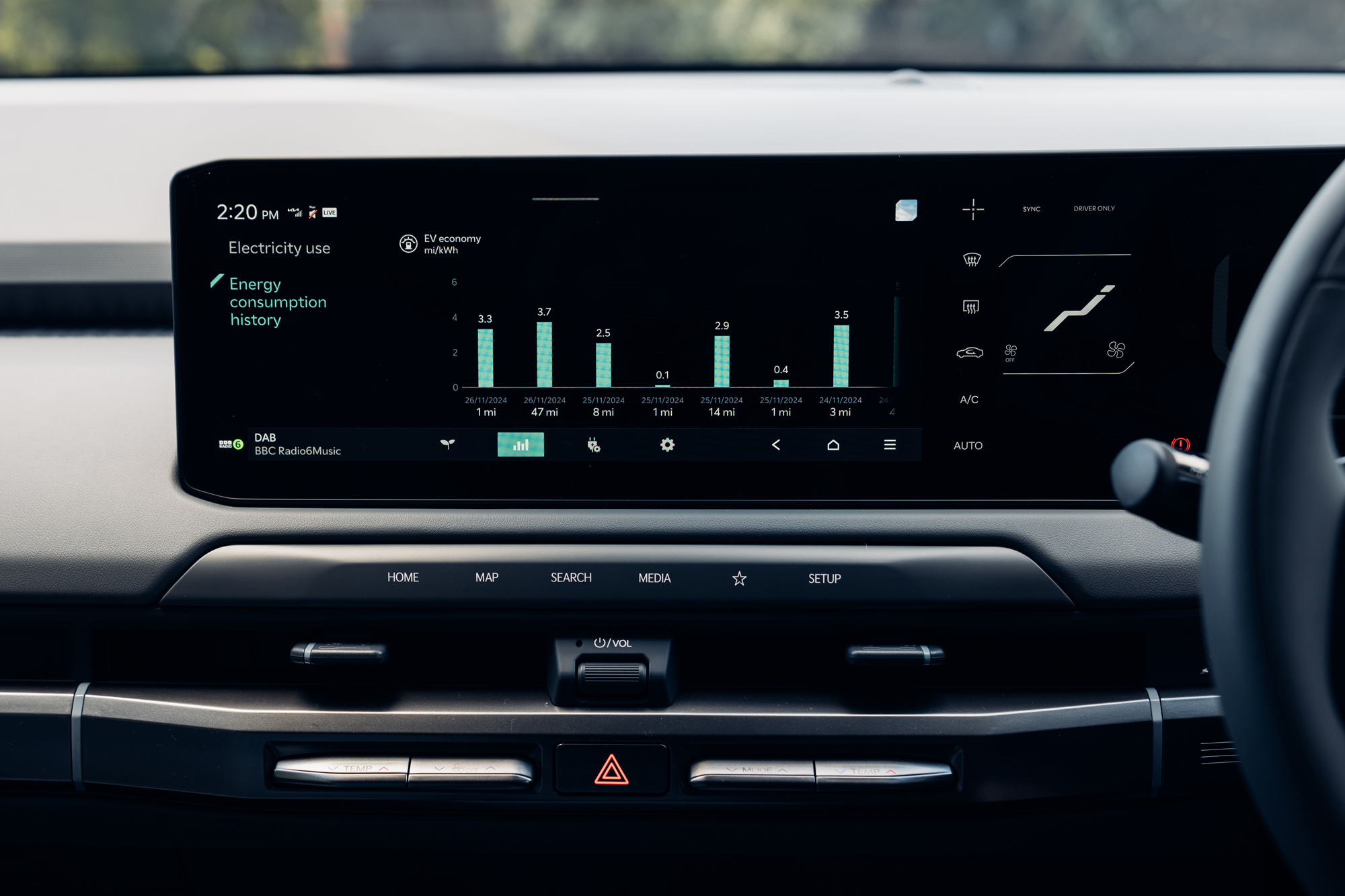
Any cool tech?
The EV3 comes equipped with vehicle-to-load charging technology as standard, which repurposes the car as a rolling power source for other electronic devices. Already seen on various other electric Kias and Hyundais, V2L supports 220-volt charging via a cable through the EV charging port, or, in the case of GT-Line S models, a three-pin socket located under the rear seats.
Kia says V2L could be used to power electrical appliances on camping trips, which perhaps credits owners with being more adventurous than they actually are, but it can also be used to charge other EVs and PHEVs, or curling tongs…
EV3s are designed to receive wireless over-the-air software updates via the Kia Connect service. Free of charge for the first seven years, Kia Connect provides online navigation, traffic updates and other road data in real time, and means Kia can update your car with new software or the latest maps when necessary.
Running low on charge
There’s only way to find out how an electric car responds to running very low on charge: just do it. So we did. We don’t recommend doing this yourself, as getting stranded with a flat battery can be a real pain; we’re on a mission to find out so that you don’t have to.
At 20 per cent battery left, we received our first Low Battery response from the car, followed by a prompt to find the nearest charging station.
At 10 per cent battery remaining came the next prompt on the infotainment display, ‘Low EV battery warning’, with the remaining range (24 miles in this case) highlighted and another route suggested to find the nearest charger. Then, over the course of the next 25 miles, it got less dramatic: not a bong, not a chime, just a number ticking down on the display.
Finally, when it hit zero per cent, the car reacted with a new Low Power mode, heralded by a graphic of a turtle on the display. That was it. No alarm system, no meltdown, no FaceTime from the Pope. A turtle. Slightly disappointed, we crawled back at a snai… turtle’s pace for three achingly nervous motorway miles, power output restricted, until we found a charging point.
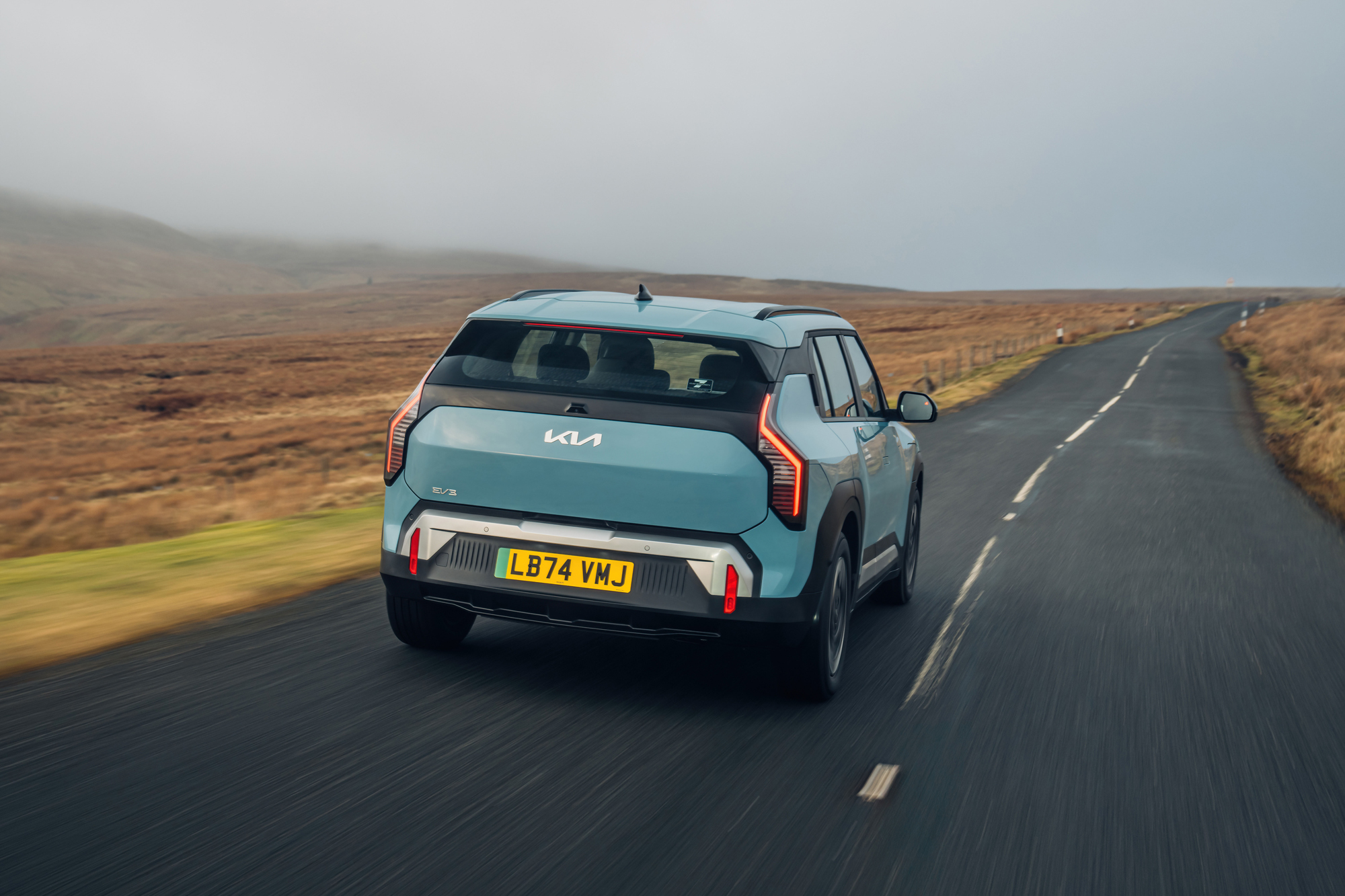
The Final Reckoning
King of the class?
Delight of delights, the EV3 feels as good as we’d hoped: like an EV9 or EV6, but smaller. That’s high praise, given how much we like those larger Kias. The EV3 follows suit in being plush, well designed both inside and out and comfortable on the road. It handles well for a compact electric SUV, though real-world range is a little disappointing; the 250-odd miles we achieved isn’t terrible, and will be plenty for some, but it’s still a way off the claimed figure. A few interior reservations aside, this is a great car.
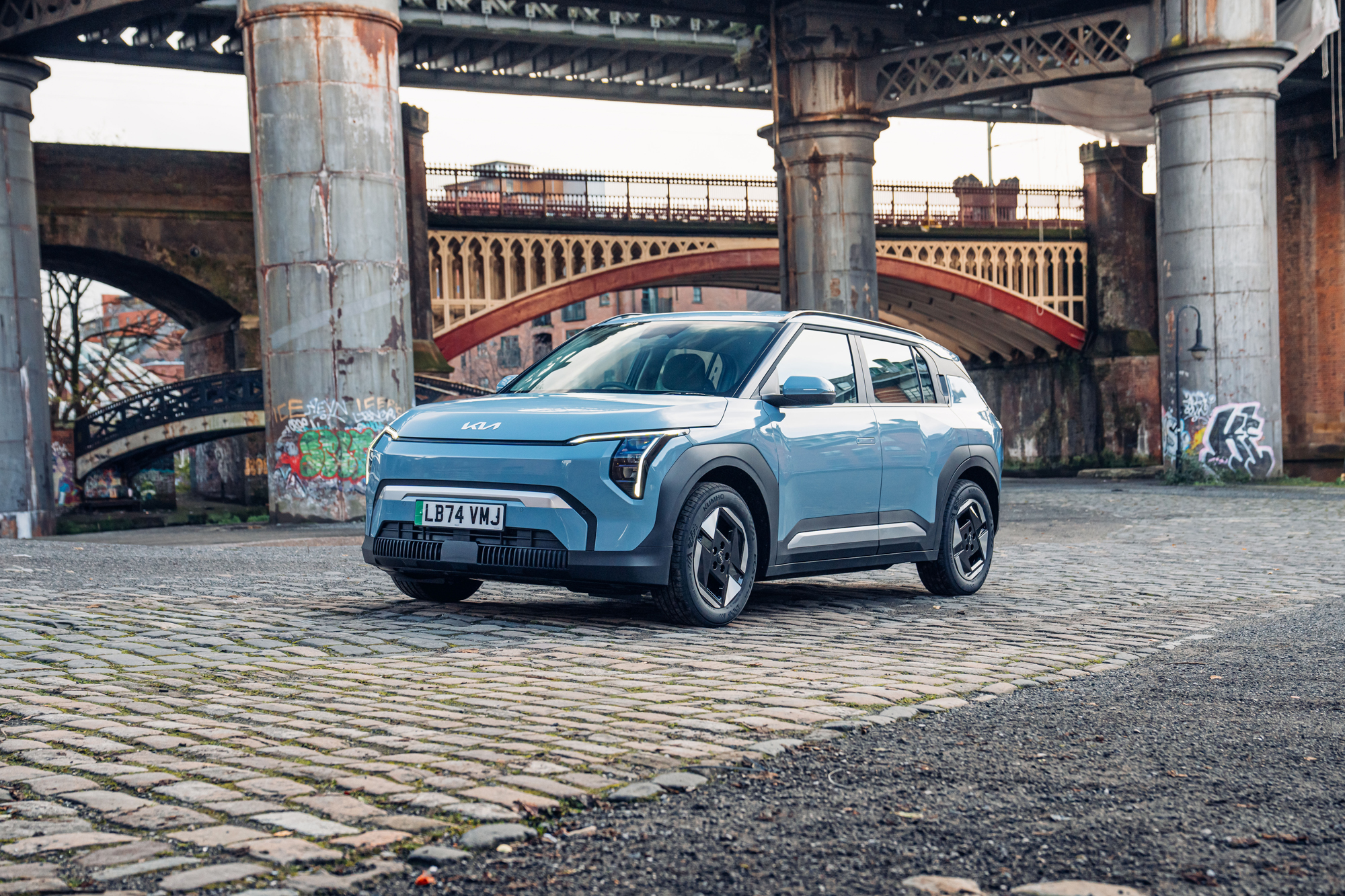
Facts & Figures | Vehicle Name
What’s the line-up?
The EV3 is an electric-only compact SUV, with three trim levels and two battery sizes for buyers to choose from. Air trim with a 58.3kWh battery starts from £33,005, though the larger 81.4kWh battery can be spec’d with Air trim for three grand more. The EV3 we tested was a GT-Line car – available with the larger battery pack only – starting from £39,405. The range tops out with GT-Line S for £43,005, or £43,905 with a heat pump included.
Data
Price £39,405 (GT-Line)
Powertrain 81.4kWh battery, electric motor, front-wheel drive
Performance 201bhp, 208lb ft, 7.9 sec 0-62mph, 105mph
Weight 1885kg
Efficiency 4.1 miles per kWh (official), 3.3 miles per kWh (tested), 367-mile range (official), 260 miles (tested), 0g/km CO2
Length/width/height 4300/1850/1560mm
Boot capacity 460 litres (seats up)

